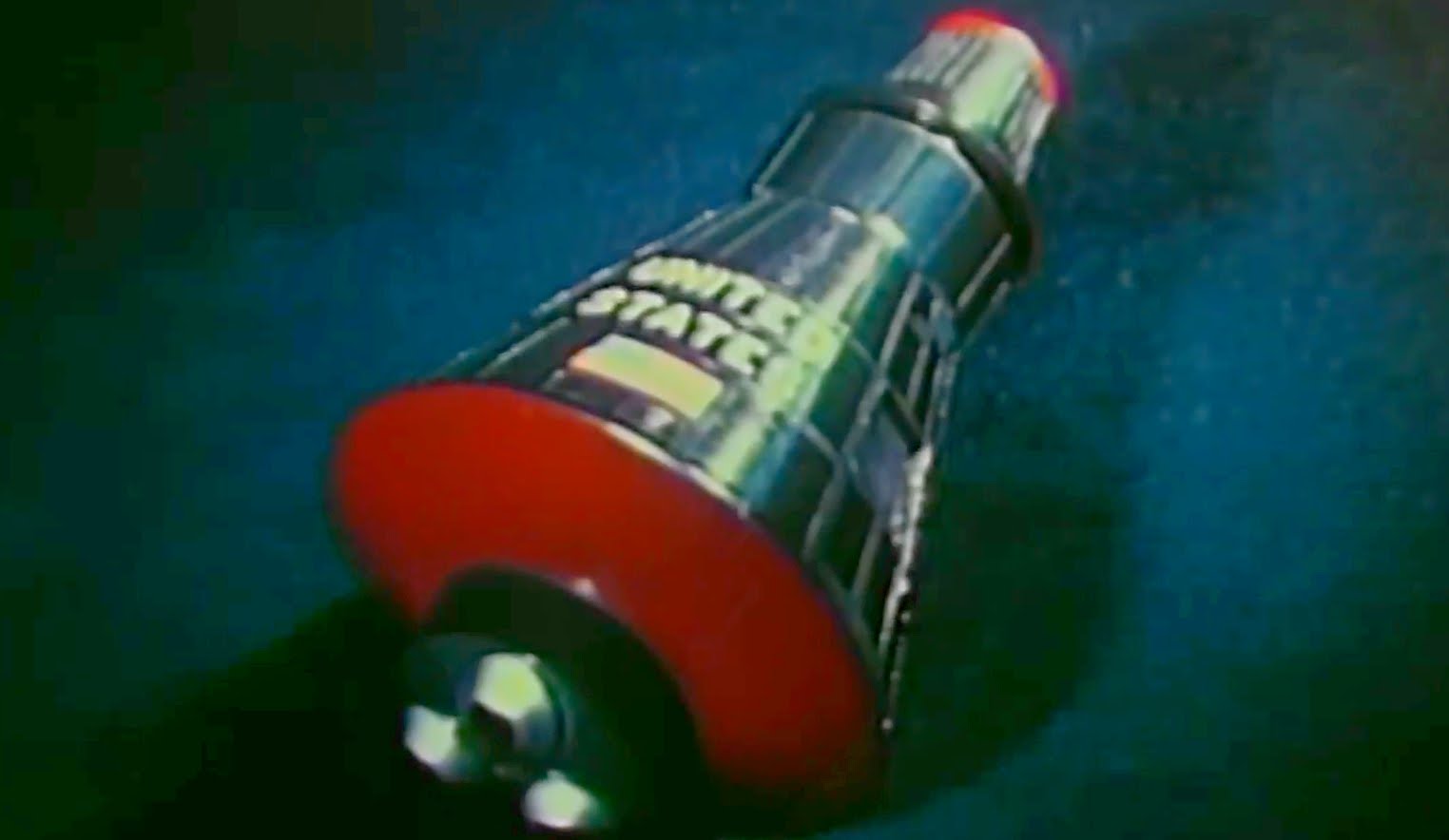Project Mercury playlist:
more at
A summation of Project Mercury produced after the completion of the final Mercury spaceflight.
Reupload of a previously uploaded film, in one piece instead of multiple parts, and with improved video & sound.
Public domain film from the NASA, slightly cropped to remove uneven edges, with the aspect ratio corrected, and mild video noise reduction applied.
The soundtrack was also processed with volume normalization, noise reduction, clipping reduction, and/or equalization (the resulting sound, though not perfect, is far less noisy than the original).
Project Mercury was the first human spaceflight program of the United States, running from 1959 through 1963. The early highlight of the Space Race, its goal was to put a solo human into Earth orbit and return him safely, ideally before the Soviet Union. Taken over from the US Air Force by the newly created civilian space agency NASA, it spanned twenty unmanned developmental missions involving test animals, and successful missions completed by six of the seven Mercury astronauts.
The Space Race had begun with the 1957 launch of the Soviet satellite Sputnik 1. This came as a shock to the American public, and led to the creation of NASA to expedite existing U.S. space exploration efforts, and place most of them under civillian control. After the successful launch of the Explorer 1 satellite in 1958, manned spaceflight became the next goal.
The Soviets put the first human, cosmonaut Yuri Gagarin, into a single orbit aboard Vostok 1 in April 1961. Shortly after this, on May 5, the US launched its first astronaut, Alan Shepard, on a suborbital flight. Soviet Gherman Titov followed with a day-long orbital flight in August, 1961. The U.S. reached its orbital goal on February 20, 1962, when John Glenn made three orbits around the Earth. When Mercury ended in May 1963, both nations had sent six people into space, but the USA was still behind the Soviets in terms of time spent in space.
The cone-shaped Mercury capsule was produced by McDonnell Aircraft, and carried supplies of water, food and oxygen for about one day in a pressurized cabin. Mercury flights were launched from Cape Canaveral, Florida, on modified Redstone or Atlas D missiles. The capsule was fitted with an escape rocket to carry it safely away from the launch rocket in case of a failure of the latter. The flight was designed to be controlled from the ground via the Manned Space Flight Network, a system of tracking and communications stations; back-up controls were outfitted onboard. Small retrorockets were used to bring the spacecraft out of its orbit, after which an ablative heat shield protected the spacecraft from the heat of reentry into Earth’s atmosphere. Finally, a parachute slowed the craft for a water landing. Both astronaut and capsule were recovered by helicopter deployed from the nearest suitable U.S. Navy ship.
The program took its name was taken from the wing-footed, fleet god of travel in Roman mythology, and is estimated to have cost $1.73 billion (current prices) and to have involved the work of 2 million people. The astronauts were collectively known as the “Mercury Seven”, and each spacecraft was named with a “7” at the end for good luck.
After a slow start riddled with humiliating mistakes, the Mercury Project gained popularity, its missions followed by millions on radio and TV around the world. Its success laid the groundwork for Project Gemini, which carried two astronauts in each capsule and perfected space docking maneuvers essential for lunar travel, and the subsequent Apollo Moon-landing program announced a few weeks after the first manned Mercury flight…
The Mercury spacecraft design was modified three times by NACA/NASA between 1958 and 1959. After bidding by potential contractors had been completed NASA selected in November 1958 the design submitted as “C”. After it failed a test flight in July 1959 a final configuration, “D”, emerged….
The spacecraft were produced at McDonnell Aircraft, St. Louis, Missouri in clean rooms and tested in vacuum chambers at the McDonnell plant. The spacecraft had close to 600 subcontractors, such as Garrett AiResearch which built the spacecraft’s environmental control system. Final quality control and preparations of the spacecraft were made at Hangar S at Cape Canaveral. NASA ordered 20 production spacecraft, numbered 1 through 20. Five of the 20, Nos. 10, 12, 15, 17, and 19, were not flown…

